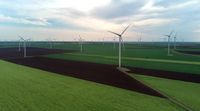Romania has found itself embroiled in a significant legal battle as an ICSID tribunal ruled in favor of a wind power investor in a claim valued at €183 million. The investor challenged Romania's decision to cut the state’s incentives for renewable energy projects under the Energy Charter Treaty, leading to international scrutiny over the country's commitment to green energy. This legal outcome has potential implications not only for Romania's renewable sector but also for investors seeking a stable regulatory environment.
The dispute arose following Romania’s controversial reforms to its renewable energy incentive scheme, which had been designed to boost investments in the sector. The changes came as Romania attempted to streamline its energy production and reduce costs associated with subsidies. As a result, the investor lodged a claim with the International Centre for Settlement of Investment Disputes (ICSID), reflecting growing tension between investors and the government.
According to the latest estimates from WindEurope, Romania is planning a gradual increase in the capacity of its new wind farms. The capacity is expected to rise from 380 MW this year to 490 MW in 2025, and further to 600 MW by 2027, ultimately totaling nearly 1.5 GW over the three years. This move comes after a stagnation in the total capacity of Romania's wind farms, which has remained around 3.0 GW for the past five years.
In 2024, only a modest increase was noted with wind farms commissioning a combined capacity of just 50 MW, contrasted sharply with aggressive expansions in other European countries, such as Germany. The latter installed over 4.0 GW of new wind projects in 2024 alone, significantly increasing its own capacity to over 72.6 GW and allowing wind energy to comprise 30% of its electricity mix, showcasing a stark difference in the pace of renewable energy development between these nations.
As Romania looks to recover from the slowdown in its renewable energy sector, it must navigate a challenging path marked by regulatory changes and investor confidence. The country’s energy landscape, which saw about 12% of its energy production coming from wind sources last year, demands revitalization through both investment and stable policies. The ICSID ruling could serve as a catalyst for more rigorous adherence to investor rights and protections in Romania's renewable energy sector.
Looking ahead, the trends in Romania’s wind energy sector not only reflect national policies but also broader global commitments towards green energy. With international stakeholders closely monitoring the outcomes of these developments, Romania’s successful navigation of its renewable energy framework could potentially bolster confidence and draw further investments into the sector, propelling it toward a more sustainable future.
In summary, the ICSID tribunal's ruling against Romania over the cuts in renewable energy incentives highlights both the complexities of international investment law and the critical issues surrounding energy policy reform. As Romania unravels these issues, it must balance between curbing costs and encouraging a sustainable energy future while keeping investor confidence intact.


